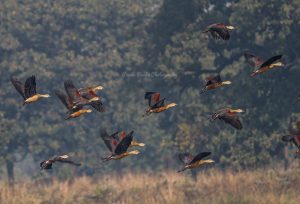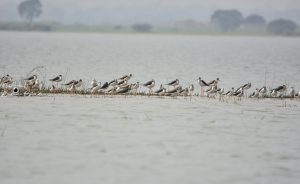Hirakud Lake Witnesses Flourishing Biodiversity in Annual Bird Census
Debrigarh: Hirakud Lake, a sprawling expanse from the Hirakud Dam to the Odisha-Chhattisgarh border, unfolded its wings of biodiversity as the annual bird census on January 8th, 2024, illuminated the vibrant avian life within its 500 sq km territory, divided into 21 sectors.
In a testament to the rich biodiversity of Hirakud Lake, the annual bird census conducted on January 8, 2024, showcased the vibrant avian life thriving in the 500 sq km area from the Hirakud Dam up to the Odisha-Chhattisgarh border, divided into 21 sectors.
This year’s bird estimation recorded an impressive 113 species, with a staggering count of 3.42 lakhs birds observed. Notably, 20 new species made their appearance, including the Glossy Ibis, Eurasian Wryneck, Knob-billed Duck, Green Sandpiper, among others, that were not documented in previous years.
The census revealed some notable highlights in terms of the highest bird counts, with the Tufted Duck leading the flock with an impressive 52,000 individuals. Following closely, the Lesser Whistling Duck tallied at 49,000, while the Red-Crested Pochard marked its presence with 33,000 individuals.
The border areas of Hirakud Reservoir along the Odisha-Chhattisgarh border, spanning from Debrigarh Sanctuary to the boundaries, emerged as hotspots hosting a substantial number of birds.
What adds to the significance of this annual event is the international flavor it brings, as migratory birds from Siberia, America, Europe, the UK, Australia, Russia, and various parts of Asia make their journey to find refuge and sustenance in the Hirakud Reservoir. This establishes the lake as a crucial habitat for a diverse range of avian species, highlighting its ecological importance and role in supporting global bird migration.
The success of this bird census not only underscores the thriving biodiversity of Hirakud Lake but also emphasizes the need for continued conservation efforts to preserve and protect this vital ecosystem for future generations.

Comments are closed.